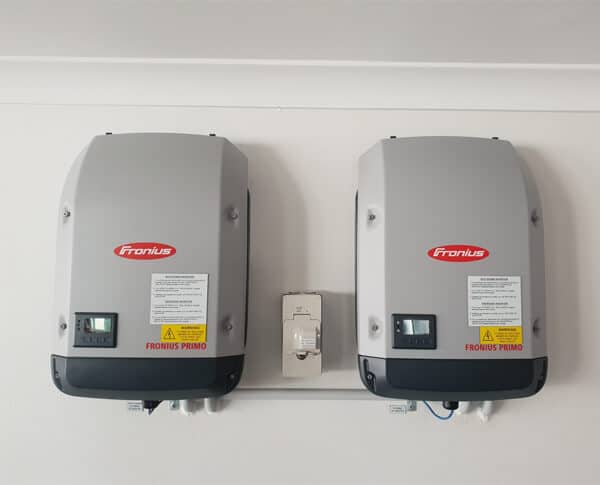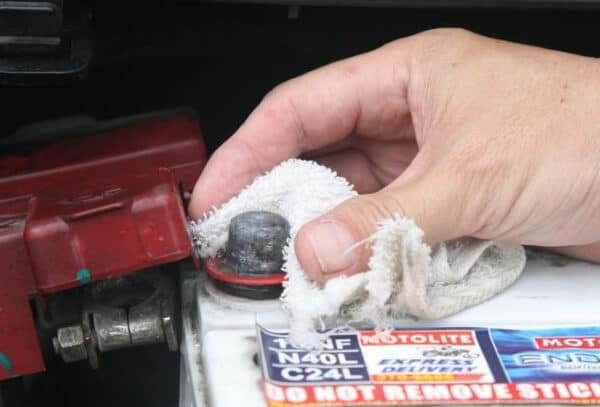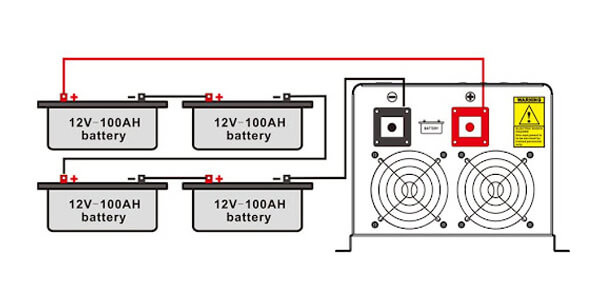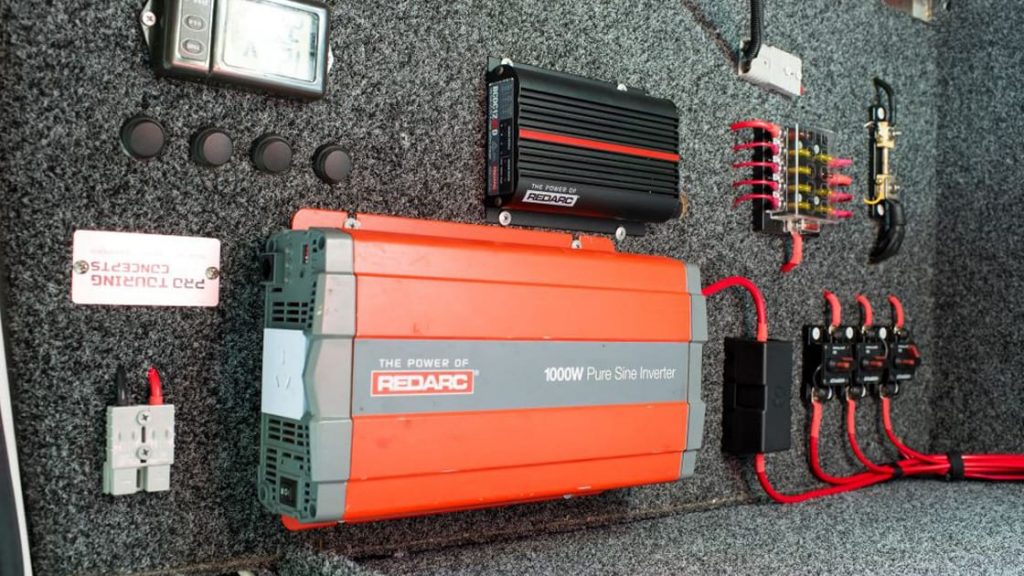Intro
Power inverters are an essential part of your home or any car that is equipped with a lot of electronic gadgets. This includes cars, trucks, boats, and even RVs. The power inverter converts the DC electricity coming from your vehicle’s battery to AC electricity so you can use it for various devices in your vehicle. For example, you can plug in your laptop or cell phone to charge them while on the road.
Over time though, this device will degrade and lose efficiency since there are parts inside that wear out after prolonged use. Maintaining your power inverter will ensure that it has a long lifespan, so you don’t have to worry about purchasing another one for years down the road. How to maintain a power inverter for better longevity? Here are some easy steps on how to maintain your power inverter properly.
Why should you care about maintaining your inverter?
Many people don’t realize the importance of regularly maintaining their inverters even when they are not in continuous use because they also fail to regularly maintain their cell phones, computers, etc. The reason is quite simple really. People think it doesn’t matter if they miss one time of maintenance, but the truth is this: Every missed opportunity of maintenance makes future maintenance more difficult and can be costly. Maintenance costs money while preventing failures saves money and headaches.
Plus some expensive pieces of equipment cannot function without proper maintenance. It is obvious to most people that it’s not a good idea to leave electric devices turned on whenever they are not in use. The problem is, many people don’t follow this rule for some of their devices. How often do you plug your cell phone into its charger and then not unplug it when the battery is fully charged? How about turning off your PC at night but forgetting to turn off the monitor? How about power inverters? How often do you hear people proudly bragging about how long their power inverter has been running continuously without any problems.
Related:
- What Is A Power Inverter? What Does An Inverter Do?
- Top 8 Best Power Inverters For Cars – Best Buying Guide
- Top 5 Best Power Inverters For Home – Ultimate Buying Guide
- Top 8 Best Power Inverter For Semi Truck Reviews – Buying Guide
How To Maintain A Power Inverter For Better Longevity
Here are some of our simple suggested steps on how to properly maintain your inverters to keep them running at their best and last.
1. Choose the right battery
A good inverter battery is one of the most important components in a home’s backup power supply. It needs to be chosen according to your individual requirements and should have an Ampere-Hour capacity that matches what you need at any given time for efficiency purposes, so keep this factor under consideration when shopping around!
2. Avoid Overloading The Inverter
You should know the capacity of your power inverter and do not overload it with high electrical devices such as appliances. This may cause an explosion or could damage the device, prolonging its lifespan in exchange for some extra safety precautions like unplugging when not in use- which will reduce the load of the power inverter.
3. Place Your Power Inverter In A Ventilated Area
If you place your inverter outside or inside without proper ventilation, the heat from. It’ll cause water drops on it which may lead to too much moisture buildup that could result in overheating of materials used for manufacturing electrical equipment such as power supplies with implications further down the line including failures caused by corrosion at microscopic. Always endeavor to keep an airy well-ventilated space available near where they are being utilized so there’s no need to worry about these potential issues arising again later.

4. Clean the Power Inverter regularly
The inverter is a necessary and critical tool for the home, so keep it clean to avoid problems. Cotton cloth can be used as needed on daily basis with the cleaning solution of water and dish detergent (or other cleaners) applied smoothly without scrubbing harshly which could damage the surface finish over time from wear-and-tear instead use brisk circles motion when wiping away dirt stains caused.
The key to a long life for your inverter is prevention. Make sure you keep the terminals on your battery should always be clean to avoid corrosion. Mix together baking soda and hot water for an easy, non-abrasive way of cleaning them off, or putting some kerosene on them will help prevent rust from forming again!

5. Keep Your Battery Always Charged
Allowing the battery of your power inverter to run down completely reduces its lifespan so try not to let it discharge too much. When you charge a discharged unit, never leave unattended with an AC outlet as this could cause overheating which will negatively affect both performance and life expectancy for both equipment-related components such as batteries; but also safety factors by causing fire hazards if left unattended while charging!
6. Check the water level of the inverter’s battery periodically
Check your water levels and make sure they stay between the minimum and maximum limit for optimum performance. Top up the battery with refined water. The inverter battery has enough water in its system to work properly, so it’s important that you check this on a schedule every two months to prevent any damage from occurring before then!
7. Guaranteed battery power cycle
Inverters are a great way to keep your devices powered, but they can’t work if their battery dies from lack of use. Power cycling the battery will help to maximize its lifespan. It’s important that you recharge your inverter monthly by discharging it completely and then reinserting it into power for re-energizing, or else this can decrease how long it lasts!

8. Change Faulty Batteries
If the battery of your inverter ever gets damaged or develops any fault, do not attempt using it anymore. It could damage both yourself and potentially cause an explosion due to various safety hazards that are involved in this process! The best thing is just replacing them with new ones when necessary instead if possible.
9. Keep away from fire and high heat source
You should always ensure that you keep your inverter battery for home safe and away from heat, fire, or smoke. If it overheats then there is a chance of permanent damage to the device as well as sparks causing several safety hazards in addition to being really dangerous!
You definitely don’t want these things happening so make sure not flame or high temperatures come near where they’re stored at all times
10. Keep Away from Children

Be careful when installing an inverter in the home. Young children are curious and enjoy playing with gadgets. Installing an inverter in a place close to where they can easily reach it may kids to smash devices or liquids that seep into its circuits through small gaps between parts- this will lead to permanent damage.
Common mistakes people make with their power inverters and how they can be avoided
The importance of regular maintenance of the inverter is to help us detect faults early so that we can fix them and use the power inverter for better longevity.
If you use an inverter for your power supply, then it is important that you know how to use it safely and not damage the device. The first thing that you need to do is ensure that you regularly check over the inverter and find any faults within its wiring and battery connections before applying any electricity through them. The next step would be to ensure that the output levels of the inverter are turned up all the way – this ensures that there isn’t extra energy being wasted by the inverter.
The safety of using an inverter can be improved by having a device that is water-resistant and shockproof, to ensure that it isn’t ruined in case it gets dropped or exposed to liquids.
With an inverter, you need to remember that if the battery has been fully charged and there isn’t too much power used through it or any sudden demand for lots of power, then the batteries won’t get drained. The problem here is that over time the plates inside the batteries will get sulfated and corroded – this results in less capacity being gained from recharging such batteries at a later date.
The other problem would be if you only use the inverter when you have low power requirements; this will mean that during peak times you may not have enough power to use whatever is plugged into the inverter as well as any devices that are powered by batteries. The best way to prevent such problems is to ensure that you don’t overuse your inverter and also try not to drain or heavily use your batteries if possible.
Another thing that you need to keep in mind is when inverters are left to charge for too long. This causes them to overheat and explode which ruins their effectiveness. The recommended length of time that an inverter should be charged for is roughly four hours and if it has been charged for too long then you should ensure that you turn it off immediately.
Conclusion
If you want to be sure that your power inverter lasts for a long time, it’s important to take steps now so that maintenance is easier in the future. Safe, careful use of the power inverter and regular maintenance will not only help detect faults early but also ensure better longevity. You can easily find tips on how to best care for your inverter by following our recommendations or consulting an expert if you have any questions.
Thank you for reading!
Further Reading:

